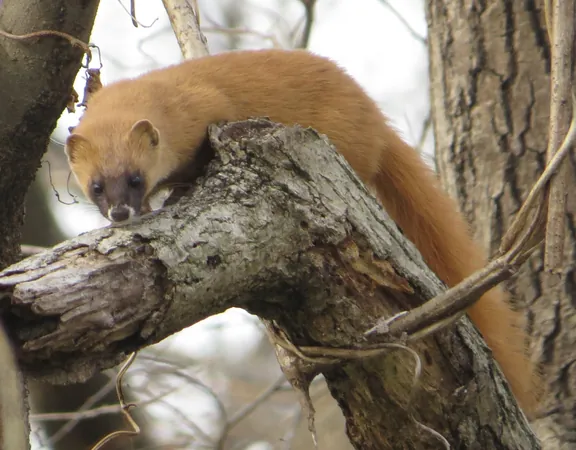
Unmasking the Japanese Weasel: A Revealing Study on Its Impact in Non-Native Islands
2025-06-13
Author: Wei
A Groundbreaking Study Unveils Weasel Dynamics
In a striking exploration of ecological balance, a research team led by Professor Eiji Inoue from Toho University has shed light on the Japanese weasel (Mustela itatsi), an animal that stirs controversy in Japan’s natural landscape. Though native to Japan, this cunning creature was deliberately introduced to several non-native islands, triggering significant disruptions in local ecosystems.
A Tale of Two Islands: Where Will the Weasel Roam?
Published on May 30, 2025, in the renowned journal PLOS One, the study investigated weasel populations on two Izu Islands: Miyakejima, an island where the weasel was introduced, and Izu-Oshima, its native habitat. By conducting thorough fecal surveys, researchers uncovered alarming insights into the weasel's expanding presence.
Growing Population: A Cause for Concern?
The findings were stark: the relative abundance of Japanese weasel feces was significantly higher on Miyakejima than on Izu-Oshima. This suggests not only an increasing population density but also a worrisome expansion of their habitat. The implications for local wildlife and native species are dire, as these introduced weasels may outcompete and threaten endemic fauna.
Understanding Habitat Choices: A Sneak Peek into Weasel Preferences
The study didn't stop at population numbers; it also uncovered critical differences in habitat use between the two islands. The types of vegetation that foster higher weasel populations varied, indicating that the introduced species is adapting its habits to thrive in new environments. This adaptability poses serious questions about the sustainability of the local ecosystems on myriad non-native islands.
What Lies Ahead for Local Ecosystems?
As the Japanese weasel continues to carve out its niche across these islands, researchers and conservationists alike are left grappling with the consequences. With increasing awareness of this situation, proactive measures may be essential to safeguard the delicate balance of these unique ecosystems.



 Brasil (PT)
Brasil (PT)
 Canada (EN)
Canada (EN)
 Chile (ES)
Chile (ES)
 Česko (CS)
Česko (CS)
 대한민국 (KO)
대한민국 (KO)
 España (ES)
España (ES)
 France (FR)
France (FR)
 Hong Kong (EN)
Hong Kong (EN)
 Italia (IT)
Italia (IT)
 日本 (JA)
日本 (JA)
 Magyarország (HU)
Magyarország (HU)
 Norge (NO)
Norge (NO)
 Polska (PL)
Polska (PL)
 Schweiz (DE)
Schweiz (DE)
 Singapore (EN)
Singapore (EN)
 Sverige (SV)
Sverige (SV)
 Suomi (FI)
Suomi (FI)
 Türkiye (TR)
Türkiye (TR)
 الإمارات العربية المتحدة (AR)
الإمارات العربية المتحدة (AR)